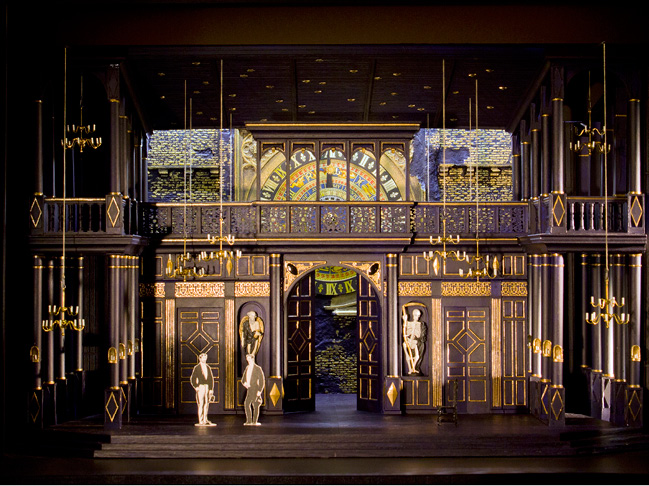One of the more eagerly awaited new productions of the Metropolitan Opera’s current season appears happily poised to avoid some of the pitfalls and embarrassing spectacles that have increasingly ensnared productions at the venerable opera house.
Whether this will translate into better ticket sales for the cash-strapped institution is anyone’s guess, but the production, Gaetano Donizetti’s Roberto Devereux of 1837, is a subject of glowing anticipation from several critics.
In an era where new stagings often tend toward clumsy and tasteless “updated” settings, Scottish director and set designer David McVicar has perhaps of necessity played it safe for this Roberto Devereux, an opera whose plot, though largely invented, is tied to some historical facts. McVicar keeps the original early-1600s setting for the opera’s tale of the English Queen Elizabeth I’s love for a nobleman whom she is forced or tricked into executing, in this staging set to open March 24 and also scheduled for “live in high definition” transmission to movie theaters on April 16.
McVicar takes the same original-period approach toward two other, closely associated Donizetti operas on the Met’s stage this season (Maria Stuarda and Anna Bolena), which with Roberto Devereux are collectively known as Donizetti’s “three Tudor queens.” All three are considered among the most important works of the bel canto operatic style prevailing in the early 19th century.
Further stirring interest in the productions―in particular Devereux, one of only six new Met productions this season, a slightly reduced roster of new stagings due to financial difficulties―is that the latter is the first-ever showing of this work at the Met. Furthermore, a single soprano, Sondra Radvanovsky, is portraying all the “three queens” in the three operas in the same season. This, as the Met proudly points out, is a rare achievement not attempted on a New York stage since the early 1970s, when Beverly Sills famously played the roles at the New York City Opera. Sills’ difficult feat is credited with tying together the “three queens” as a unit in the opera-going public’s imagination: Donizetti never intended the three operas, each with a different librettist, as a trilogy.
Radvanovsky’s upcoming portrayal of Elizabeth I is enthusiastically awaited, with one critic, WQXR’s Fred Plotkin, remarking that she was “stupendous” playing the same role in Toronto with the Canadian Opera Company in 2014. It is partly on this basis that the critic has named the Met productions of the “three queens” as one of the two major highlights of its current season (the other being Alban Berg’s Lulu.)

Also generating interest in the new Roberto Devereux is the involvement of the noted Italian orchestra conductor and bel canto specialist Maurizio Benini. Benini’s work is generally praised and his conducting has been called “beautiful,” but more than one critic has also accused him of conducting at excessive tempos―including in the context of Roberto Devereux specifically, when, in 2002, he conducted the Orchestra of the Royal Opera House Covent Garden in a concert performance of the same work. However, it seems Benini may have mellowed somewhat in more recent times: the estimated run time of the Devereux as announced by the Met, at two hours and 15 minutes not counting intermission, is about 10 minutes longer than that previous performance as recorded on compact disc, and would bring the length into a more or less average range for this work. Benini is one of a number of conductors at the Met whose positions could conceivably advance with the eventual retirement of musical director James Levine, whose directing days appear to be numbered as he suffers from Parkinson’s disease.
Other principal cast members in the new performance include Matthew Polenzani as Devereux, Earl of Essex; Elīna Garanča as Sara and Mariusz Kwiecien as the Duke of Nottingham, the two other participants in a tangle of love and jealousy devouring the queen and Devereux.
Donizetti―who composed more than 70 operas in a career cut short by insanity and untimely death at age 50―had an abiding interest in tales of the British monarchy, but little compunction about embellishing the history. Such is the case with Devereux, whose plot revolves around a few established facts. The real Devereux, once a favorite of the aging queen, was tried and beheaded for treason at age 34 after incurring her anger through a lengthy series of unfortunate choices, including making an unauthorized truce with a group of Irish rebels whom he had been expected to suppress. Much of the rest of Donizetti’s tale―as told through the libretto by Salvatore Cammarano, which borrows in turn from previous theatrical reworkings―is fantasy.










